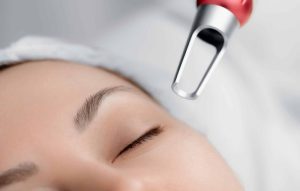
The Structure of the Respiratory System
The respiratory system is a complex network designed to supply the body with oxygen and remove carbon dioxide. It begins at the nose and mouth, where air is inhaled, and extends to the lungs, where gas exchange occurs. The system is divided into the upper respiratory tract, which includes the nasal cavity, pharynx, and larynx, and the lower respiratory tract, comprising the trachea, bronchi, and bronchioles.
The lungs themselves are spongy organs that house the bronchi and bronchioles, which branch out into tiny air sacs called alveoli. It is within these alveoli that oxygen is transferred to the blood and carbon dioxide is expelled. The diaphragm, a muscle beneath the lungs, plays a crucial role in breathing by contracting and relaxing to allow air movement.
Understanding the structure of the respiratory system is vital for recognizing how diseases such as mesothelioma can affect lung health. Mesothelioma, a type of cancer that affects the lining of the lungs, is one such condition that highlights the importance of maintaining lung health and monitoring for symptoms of respiratory illnesses.
The Role of the Lungs in Gas Exchange
The primary function of the lungs is to facilitate gas exchange, a critical process for maintaining life. This exchange occurs in the alveoli, tiny air sacs where oxygen from inhaled air is transferred to the blood, and carbon dioxide, a waste product of metabolism, is removed from the blood and exhaled.
- Oxygen uptake: When air reaches the alveoli, oxygen binds to hemoglobin in red blood cells, providing vital oxygen to body tissues and organs.
- Carbon dioxide removal: As blood circulates through the lungs, carbon dioxide diffuses from the blood into the alveoli to be exhaled, thus regulating the body’s pH levels.
Efficient gas exchange is essential for physical health and any impairment can lead to significant health issues. Conditions such as chronic obstructive pulmonary disease (COPD) and asthma can disrupt this delicate process, leading to symptoms like shortness of breath and fatigue. It is important for individuals with symptoms suggestive of lung disease to consult their healthcare team for proper diagnosis and management. A comprehensive approach to care may include medications, lifestyle changes, and in some cases, surgical interventions. For those seeking information on specific lung conditions such as mesothelioma, a website page dedicated to symptoms, diagnosis, and treatment options can be a valuable resource. It is crucial to maintain open communication with healthcare providers to effectively manage symptoms and receive appropriate care.
Common Lung Diseases and Conditions
The lungs are susceptible to a variety of diseases and conditions that can significantly impact health and quality of life. Among these, chronic obstructive pulmonary disease (COPD) and asthma are prevalent, affecting millions worldwide. COPD is a group of lung conditions that block airflow and make breathing difficult, while asthma is characterized by inflamed airways that can tighten and cause shortness of breath.
Another serious condition is lung cancer, which remains one of the leading causes of cancer-related deaths globally. Early detection is crucial for improving survival rates. Pulmonary fibrosis, which involves the scarring of lung tissue, and cystic fibrosis, a genetic disorder that causes severe damage to the lungs, are also notable lung diseases.
Exposure to asbestos can lead to malignant mesothelioma, a rare but aggressive form of cancer affecting the lining of the lungs. This resource offers valuable information on mesothelioma, including treatment options and legal aspects. Pneumonia and tuberculosis, both infectious diseases, continue to pose significant health challenges, especially in areas with limited access to healthcare.
Lifestyle Choices for Healthy Lungs
The Impact of Smoking on Lung Health
Smoking is one of the most detrimental habits for lung health. It introduces a variety of harmful chemicals, including carcinogens, into the respiratory system, which can lead to chronic obstructive pulmonary disease (COPD), lung cancer, and a host of other respiratory illnesses.
The effects of smoking on the lungs include:
- Inflammation and narrowing of the airways and alveoli
- Reduced lung function and breathlessness due to swelling and narrowing of the lung airways
- Increased risk of lung infection due to damaged cilia
Quitting smoking can significantly improve lung health. Within just a few months of cessation, lung function begins to improve, and the risk of lung disease decreases. Support systems, such as counseling and medication, can aid individuals in the quitting process, highlighting the importance of seeking help when attempting to give up smoking.
Exercise and Lung Capacity
Regular physical activity is crucial for maintaining and improving lung capacity. Exercise challenges the respiratory system, prompting it to become more efficient over time. As the body adapts to increased demand, lung function and oxygen uptake improve, contributing to overall health and endurance.
Key benefits of exercise for lung capacity include:
- Enhanced oxygen delivery to muscles and organs
- Strengthened respiratory muscles
- Improved clearance of mucus from the airways
- Increased stamina and reduced breathlessness during physical activity
It’s important to note that the type and intensity of exercise should be tailored to individual fitness levels and health conditions. Aerobic exercises such as walking, cycling, and swimming are particularly beneficial for lung health. For those with existing lung conditions, consulting with a healthcare provider before starting an exercise regimen is essential to ensure safety and effectiveness.
Dietary Considerations for Lung Function
The foods we consume can have a significant impact on lung health. A diet rich in antioxidants, for example, can help protect lung tissue from the damage caused by free radicals and environmental pollutants. Certain nutrients have been identified as particularly beneficial for maintaining and improving lung function.
- Antioxidants: Foods high in antioxidants, such as berries, leafy greens, and nuts, can help reduce inflammation and protect lung tissue.
- Omega-3 fatty acids: Found in fish like salmon and sardines, these fats can help reduce inflammation in the lungs.
- Vitamin D: Adequate levels of vitamin D are crucial for immune function and may help prevent respiratory infections.
- Magnesium: This mineral, found in nuts, seeds, and whole grains, can improve lung function and breathing.
It’s also important to stay hydrated, as water plays a key role in maintaining mucosal lining in the lungs. Conversely, certain foods and beverages, such as those high in trans fats and sulfites, can exacerbate respiratory problems. Individuals with specific lung conditions should consult with healthcare professionals to tailor their diets accordingly. By making informed dietary choices, individuals can support their lung health and potentially reduce the risk of lung-related diseases.
Environmental Factors Affecting Lung Health
The air we breathe is filled with various substances that can impact lung health. Environmental factors such as pollution, occupational hazards, and indoor air quality play a significant role in respiratory well-being.
- Outdoor air pollution from vehicles, industrial processes, and even natural events like wildfires can introduce harmful particles into the air, leading to respiratory issues.
- Occupational hazards, including exposure to chemicals and dust, are prevalent in certain industries. Workers in construction, mining, and manufacturing may encounter substances like asbestos, which can cause serious lung diseases.
- Indoor air quality is influenced by tobacco smoke, mold, household chemicals, and poor ventilation. Ensuring good indoor air quality is crucial for lung health, especially since most people spend a large portion of their time indoors.
It’s important to be aware of these environmental factors and take steps to minimize exposure. Regularly checking air quality indexes, using air purifiers, and advocating for cleaner air policies can help protect our lungs from harmful environmental influences.
Preventative Measures Against Respiratory Illnesses
Vaccinations and Lung Health
Vaccinations play a crucial role in protecting lung health by preventing respiratory infections that can lead to serious complications. Immunizations, such as the influenza vaccine and pneumococcal vaccine, are particularly important for individuals at higher risk, including the elderly, children, and those with chronic lung conditions.
- Influenza Vaccine: Reduces the risk of flu-related pneumonia.
- Pneumococcal Vaccine: Guards against pneumococcal diseases that can cause pneumonia, meningitis, and bloodstream infections.
- COVID-19 Vaccine: Helps prevent severe illness from the coronavirus, which primarily affects the lungs.
Staying up-to-date with vaccinations is a key preventative measure. It is recommended to consult with healthcare providers to determine the appropriate vaccination schedule. For those with existing lung diseases, vaccinations can be a critical defense against exacerbations and hospitalizations.
Importance of Hand Hygiene
Hand hygiene stands as a cornerstone in preventing the spread of respiratory infections. Regular and thorough hand washing with soap and water can remove germs that may lead to lung illnesses. It is particularly crucial during flu season and in the context of global pandemics.
Effective hand hygiene involves several key steps:
- Wet hands with clean, running water before applying soap.
- Lather soap on all hand surfaces, including the backs of hands, between fingers, and under nails.
- Scrub hands for at least 20 seconds, which is roughly the time it takes to hum the “Happy Birthday” song twice.
- Rinse hands well under clean, running water.
- Dry hands using a clean towel or air dry them.
Alcohol-based hand sanitizers can be a convenient alternative when soap and water are not available. However, they should contain at least 60% alcohol to be effective. Hand hygiene is not only a personal responsibility but also a public health practice that can significantly reduce the incidence of respiratory diseases.
Avoiding Respiratory Irritants and Allergens
Minimizing exposure to respiratory irritants and allergens is crucial for maintaining lung health. Individuals can take several proactive steps to reduce their risk of respiratory issues.
- Identify Triggers: Understanding what triggers allergic reactions or respiratory distress is the first step. Common irritants include pollen, dust mites, mold, pet dander, and smoke. Once identified, measures can be taken to avoid or minimize these triggers.
- Air Quality: Improving indoor air quality can significantly reduce the presence of irritants. This can be achieved by using air purifiers, maintaining proper ventilation, and using hypoallergenic filters in heating and cooling systems.
- Cleanliness: Regular cleaning and dusting can limit the accumulation of allergens in the home. It’s also beneficial to wash bedding in hot water weekly and to choose easy-to-clean furnishings and flooring.
- Personal Habits: For those sensitive to outdoor allergens, changing clothes and showering after being outside can help. It’s also advisable to monitor air quality reports and limit outdoor activities when pollution levels are high.
By incorporating these strategies into daily routines, individuals can create a healthier environment for their lungs and reduce the likelihood of respiratory complications.
Diagnostic Tools and Monitoring Lung Health
Pulmonary Function Tests
Pulmonary Function Tests (PFTs) are a group of noninvasive tests that measure how well the lungs are working. These tests assess lung volume, capacity, rates of flow, and gas exchange. This information can help your healthcare provider diagnose and decide the treatment of certain lung disorders.
There are several types of PFTs, including:
- Spirometry: the most common PFT, which measures the amount and speed of air that can be inhaled and exhaled.
- Gas diffusion tests: assess how well the lungs exchange gases.
- Body plethysmography: determines lung volume and airway resistance.
- Exercise stress tests: evaluate lung function during physical activity.
Before undergoing a PFT, patients are usually advised to avoid certain medications, heavy meals, and vigorous exercise. It’s also important to wear loose-fitting clothing to the test. The results of PFTs can lead to the detection of conditions like asthma, chronic obstructive pulmonary disease (COPD), and pulmonary fibrosis. Regular monitoring through PFTs can be crucial for patients with chronic lung conditions, as it allows for the timely adjustment of treatment plans.
Imaging Techniques for Lung Assessment
Advancements in medical imaging have significantly improved the ability to assess and diagnose lung conditions. Among the most common techniques are chest X-rays, which provide a two-dimensional view of the lungs and can detect a range of abnormalities, from pneumonia to lung cancer.
Computed tomography (CT) scans offer a more detailed, three-dimensional perspective, allowing for the detection of smaller lesions that may not be visible on a standard X-ray. Magnetic resonance imaging (MRI) is less commonly used for lung assessment due to the lungs’ air content, but it can be beneficial in certain cases, such as evaluating lung masses or the chest wall.
Other specialized imaging techniques include:
- Positron emission tomography (PET) scans, often combined with CT scans (PET/CT), to provide metabolic information of lung nodules or tumors.
- Ultrasound, which can be used at the bedside to quickly assess conditions like pleural effusions or pneumothorax.
- Ventilation/perfusion (V/Q) scans that evaluate the airflow and blood flow within the lungs, particularly useful in diagnosing pulmonary embolisms.
Each imaging modality has its indications and limitations, and the choice of technique is tailored to the patient’s specific clinical scenario. Radiologists play a crucial role in interpreting these images and guiding clinicians towards accurate diagnoses and effective treatment plans.
Regular Health Check-ups and Screening
Regular health check-ups and screenings are vital components in maintaining lung health and early detection of potential issues. These check-ups often include a review of the patient’s medical history, a physical examination, and sometimes, specific lung function tests.
Primary care physicians may recommend routine screenings for individuals at higher risk for lung diseases, such as smokers or those with a family history of respiratory issues. The frequency of these screenings can vary based on individual risk factors and existing health conditions.
Key elements of lung health screenings may include:
- Spirometry, to measure the amount and speed of air that can be inhaled and exhaled
- Chest X-rays or CT scans, to provide visual insights into lung health
- Blood tests, to check for signs of infection or inflammation
- Measurement of oxygen levels in the blood, often using a pulse oximeter
Staying proactive with regular health check-ups can lead to the timely management of lung conditions and a better overall prognosis.
Treatment and Management of Lung Conditions
Medications and Therapies
Effective management of lung conditions often involves a combination of medications and therapies tailored to the individual’s specific needs. These treatments aim to alleviate symptoms, improve lung function, and enhance overall quality of life.
- Bronchodilators are commonly prescribed to relax the muscles around the airways, making breathing easier for patients with conditions like asthma and COPD.
- Corticosteroids help reduce inflammation in the airways, which can be beneficial in managing chronic lung diseases.
- Antibiotics are used to treat bacterial infections that can exacerbate lung conditions.
- Oxygen therapy may be necessary for those with severe respiratory issues to ensure adequate oxygen levels in the blood.
In addition to medication, pulmonary rehabilitation programs offer a comprehensive approach to lung health, incorporating exercise training, nutritional advice, and education on lung disease management. For some patients, therapies such as chest physiotherapy and postural drainage are essential to clear mucus from the lungs and improve respiratory function.
Pulmonary Rehabilitation Programs
Pulmonary rehabilitation programs are a cornerstone in the management of chronic lung diseases, such as chronic obstructive pulmonary disease (COPD) and pulmonary fibrosis. These structured programs are designed to improve the overall quality of life for patients by addressing various aspects of their condition.
Key components of pulmonary rehabilitation include:
- Exercise training to enhance physical fitness and improve breathlessness.
- Education on lung health and self-management strategies.
- Nutritional counseling to support lung function and general health.
- Psychological support to help cope with the emotional aspects of living with a chronic lung condition.
Patients typically attend sessions several times a week over a period of several weeks or months. The interdisciplinary approach of these programs involves a team of healthcare professionals, including respiratory therapists, physical therapists, and dietitians, who work together to tailor the rehabilitation to the individual’s needs. The ultimate goal is to equip patients with the tools they need to manage their symptoms effectively and maintain their independence.
Surgical Interventions and When They Are Necessary
Surgical interventions are considered for lung conditions when other treatments have not been effective or when the disease has progressed to a severe stage. These procedures can range from minimally invasive techniques to major surgeries, such as a lung transplant.
Key considerations for surgical intervention include:
- The patient’s overall health and ability to withstand surgery.
- The severity and progression of the lung condition.
- The likelihood of improving quality of life and lung function post-surgery.
Common surgical procedures for lung health include:
- Lobectomy or pneumonectomy for lung cancer.
- Bullectomy for chronic obstructive pulmonary disease (COPD) to remove air spaces that impede breathing.
- Lung volume reduction surgery, also for COPD, to help the remaining lung tissue work more efficiently.
- Lung transplantation for end-stage lung disease, offering a chance for extended life and improved breathing.
Patients considering surgical options should engage in thorough discussions with their healthcare providers to understand the risks, benefits, and potential outcomes of surgery. Postoperative care and rehabilitation are crucial for recovery and long-term lung health.
Living with Chronic Lung Disease
Living with chronic lung disease presents unique challenges that require ongoing management and care. Patients must often adapt their lifestyles to accommodate their condition and maintain the best possible quality of life.
- Education: Understanding the disease is crucial. Patients should learn about their specific condition, potential triggers, and how to manage symptoms effectively.
- Support Systems: Building a strong support network, including healthcare providers, family, and support groups, can provide emotional and practical assistance.
- Treatment Adherence: Sticking to prescribed treatment plans, including medications and therapies, is essential for managing symptoms and preventing complications.
Regular monitoring of lung function and symptoms is important to detect any changes in condition. Patients should work closely with their healthcare team to adjust treatments as necessary. Lifestyle modifications, such as quitting smoking and improving indoor air quality, can also make a significant difference in managing chronic lung disease. Ultimately, a proactive approach to care can help individuals with chronic lung conditions lead fulfilling lives.



